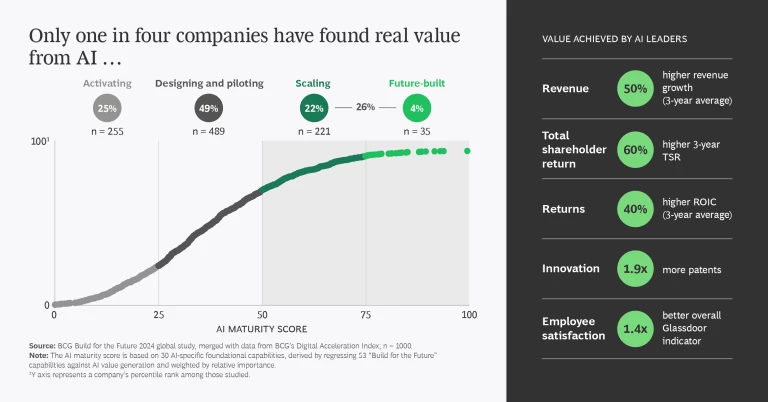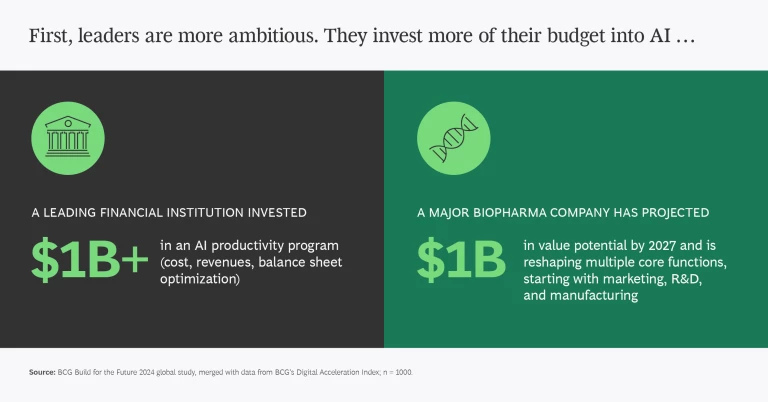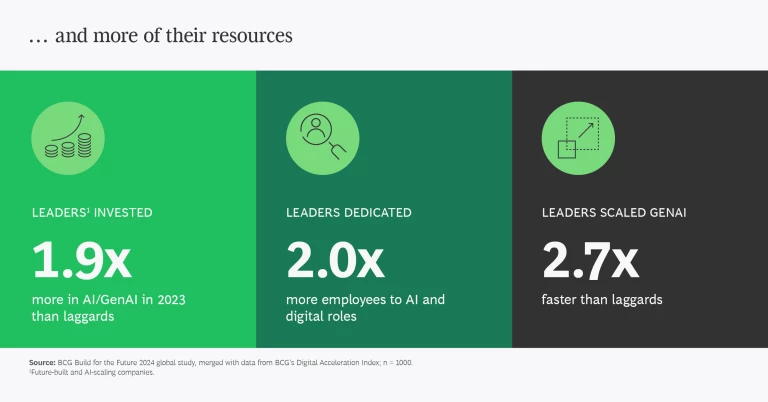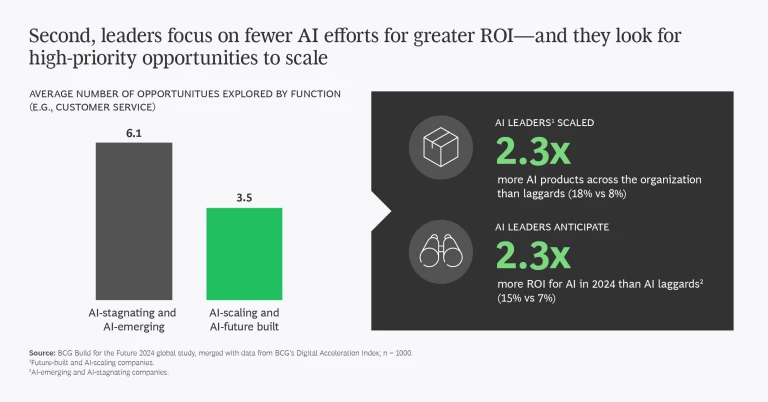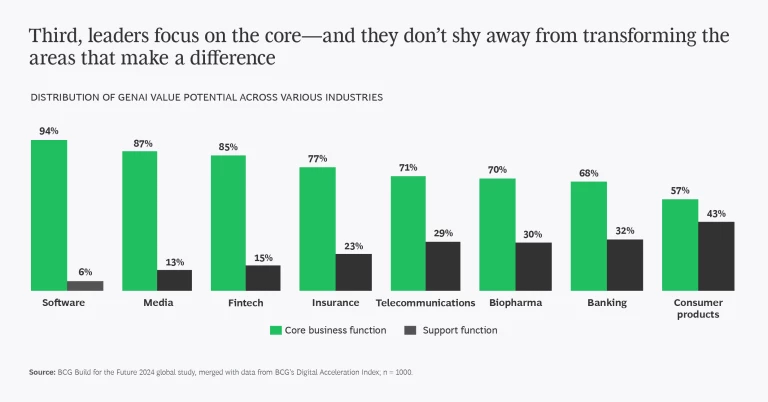After all the hype over artificial intelligence , only one in four companies have cracked the code and are finding real value . Most are still stuck, unable to translate experiments into real business impact. So what sets the leaders apart? They’re using BCG’s three AI value plays, Deploy, Reshape, and Invent: deploying the technology for immediate productivity gains, reshaping critical functions, and inventing new revenue streams by developing novel products and services.
For these high-achieving companies, the true value of AI lies in end-to-end transformation. Leaders understand that AI supports business strategy—and they are finding real-world results by thinking big, using AI responsibly, and keeping a clear focus on value that goes beyond productivity. Functional leaders are at the heart of this change. By reshaping critical functions—including finance , operations , HR , IT, and more—executives can boost efficiency by up to 50% and generate significantly higher ROI.
But achieving this level of transformation requires more than adopting new tools. It demands a commitment to behavioral change, a people-centric focus, and sustained investment in foundational capabilities. Here’s how leaders can build future-ready functions and make AI pay off.
Tech + Us: Monthly insights for harnessing the full potential of AI and tech.
The People Part of Transformation
Getting started often isn’t the problem. Virtually all companies are experimenting with AI. But the real transformation hinges on people. Without strong, people-centered strategies, even the best AI initiatives can fall short. The pacesetters are guided by the 10–20–70 rule: 10% of a company’s efforts should be focused on algorithms, 20% on technology and data, and the remaining 70%—the lion’s share—on people and processes.
Finding the best fit for AI within your organization isn’t easy. When it’s used in the wrong way, for the wrong tasks, generative AI can make teams less effective . But when the technology is used in the right way, it doesn't just increase productivity—it expands capabilities and broadens the range of tasks employees can perform.
Bringing in a tool as powerful as AI will demand much from your teams. Building new skills is key, but so is growing fresh ways of thinking and driving behavioral change. Spreading AI use across roles means building trust in AI and GenAI through establishing proper guardrails and implementing responsible AI practices while sparking excitement about how these tools can help your people thrive. AI handles mundane tasks—the toil that slows your people down—so that teams can focus on work they find fulfilling , strategic, and creative.
What Makes AI Pay Off?
Investments in people, talent, and culture are crucial, but what separates routine AI use from something more transformative? For one, combining predictive and generative AI is a big advantage—you'll have the best in analytic power and creativity. And leaders expect to generate significant, measurable value from these technologies—50% higher revenue growth and 60% higher total shareholder return than other firms.
What are they doing differently? Leaders stand out in three key ways:
- They are more ambitious. Leaders set big targets and invest more of their budget and resources to digital and AI capabilities.
- They focus on fewer efforts for greater ROI. Leaders invest strategically in a few high-priority opportunities to scale and maximize AI’s value. They focus on fewer use cases, but they put more money, resources, and effort into those opportunities.
- They focus on the core. Leaders are using AI not only to strengthen support areas, but to transform essential business operations. These core functions vary across industries, like R&D in pharma or underwriting in insurance. The key is that they don’t shy away from those areas—because you can find real advantage there.
Are You Ready to Get Started?
The future belongs to those who embrace AI to unlock efficiency, pioneer innovation, and drive growth. But maximizing value from AI is a marathon, not a sprint. Leaders can change their own AI trajectories by reshaping critical functions—ultimately driving enterprise-wide transformation.















